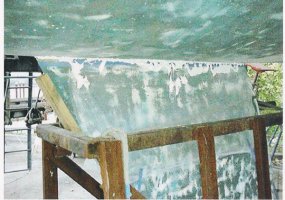More concerns about keel/hull joint
In response to one of the above posts (Ted's), yes, I did taste the water in the bilge, just a bit on my fingertip, to determine if it was salt water or freshwater, as the problem/solution would be different depending on outcome (but I generally keep the bilge quite clean, so it wasn't as bad as it may sound

)
I think the drip from the stuffing box is another potential source on many boats--easily corrected by adjusting it to drip a bit less. But I have a dripless seal, so I know that isn't the cause of bilge water in my boat.
I am still puzzled as to why my bilge is dry when the boat has been sitting at the dock, but has that cup of water in it after an afternoon of brisk sailing--my best guess is that the movement of the keel under the stress of sailing allows some water into the joint. However, I would think that a 4,000 pound keel hanging in the water at the dock would also allow at least some water in. I know that the dryness isn't coming from the bilge pump pumping it out before I get there, as the switch level would leave about an inch of water in the bilge, but it is totally dry when at dock.
I have also checked as many of the other seacocks/hoses as I can find for any leakage, and so far can't find any that would explain the water in the bilge. However, if there is anywhere else on the engine that could be leaking that I could check, please let me know, as that might explain the water in the bilge while away from the dock. The hoses and exhaust were replaced within the past five years, so I don't think it's something like the exhaust elbow.
Any additional ideas? Also, if it is leaking at the keel/hull joint, what do you all think about simply recaulking the seam (with 4200 or 5200), vs. reinforcing with fibreglass cloth/fairing vs. dropping/rebedding the keel. Obviously, rebedding is the best option, but how would you decide which of the above you would do under what circumstances (aside from the very real budget factor).
This is a very helpful thread (as usual)

--thanks for your replies.
Frank.



